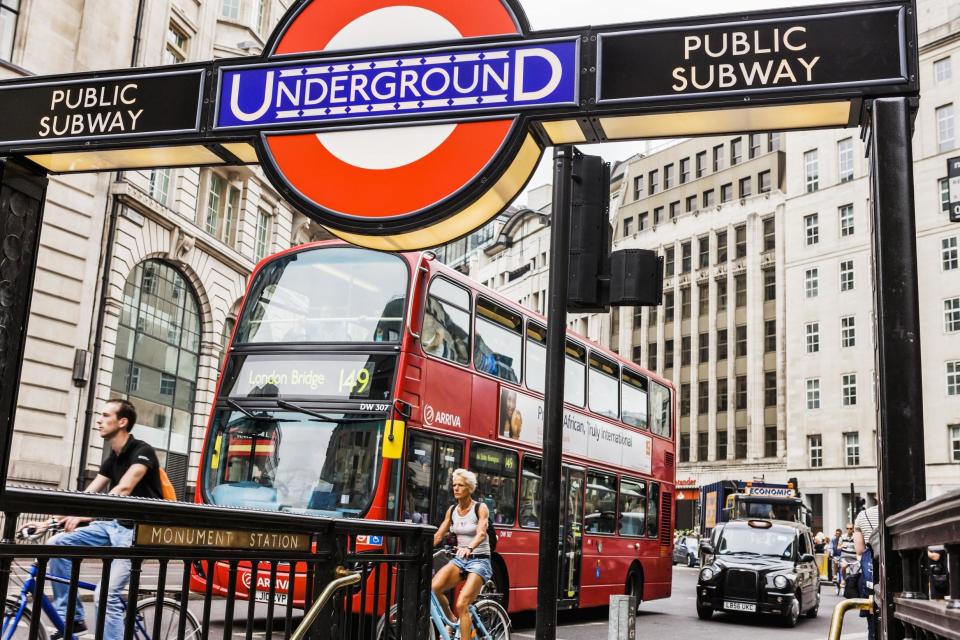London must embrace new ideas to keep our transport moving

For Garry Kasparov, 1997 was a tough year. He was the number-one chess player on the planet and he’d agreed to play a match against Deep Blue, a supercomputer designed by IBM. Kasparov was so confident that he turned down an offer to split the $500,000 prize money evenly between the winner and loser — he wanted all or nothing.
This confidence quickly turned sour, and with millions of people watching on television, Kasparov became the first reigning chess champion in history to be beaten by a computer.
After that experience, you’d forgive Kasparov if he ended up despising technology and dedicated the rest of his life to smashing up every robot on the planet. In fact, since he stopped being a professional chess player, Kasparov has become part of a group of intellectuals who believe the pace of technology change and innovation is slowing down — and argue that this is a bad thing for humanity.
Kasparov has lots of case studies to back up his argument — like the fact that 12 people set foot on the Moon between 1969 and 1972 but no one has been back since.
What’s fascinating is how many of Kasparov’s examples involve travel. Passenger aeroplanes have actually got slower since Concorde was retired in 2003. Trains were often faster in the Victorian era than they are today.
You can find a similar picture here in London. Average traffic speeds have fallen steadily over the past decade, to just 8mph today.
Back in the 19th century London was the first in the world to have an underground railway, which was a bold technological leap forward that made it easier and cheaper to navigate the metropolis. A couple of decades later there was another global first, with the launch of the first subterranean electric trains.
It’s not unreasonable to say that since then the pace of innovation has slowed. That’s doesn’t mean Transport for London isn’t doing a great job. The Night Tube and improvements to the Overground network have made a difference to life in the city, and Crossrail will no doubt do the same. But with demographic and economic change happening all around us, it’s clear that our transport system is going to have to evolve fast to keep up.
TfL is in charge of regulating new transport operators but also competes with them
Rohan Silva
New work patterns and online shopping mean that Londoners are travelling in different ways — leading to major shifts in the way public transport is being used. As the most recent data shows, even though the capital’s population is growing, there’s been a big drop in passenger numbers — with 20 million fewer journeys made over the past year. This has led to a big fall in fare revenue and, as LSE professor Tony Travers wrote in this paper last week: “Transport for London’s finances are now in a dire condition.”
So what should TfL do to step up the pace of innovation and keep our city moving forward?
The first thing would be to welcome new entrepreneurial transport ideas. Right now there are a host of innovative companies, such as carpooling service Via and ethical taxi firm Lyft, which are being blocked from operating in the city because TfL is so slow at handing out licences. As one entrepreneur pointed out to me recently, Paris is now an easier place to launch a taxi app than London.
Citymapper faced huge obstacles to be allowed to launch its innovative new bus service Smart Ride, which operates on routes chosen using data showing the biggest gaps in the TfL network. What’s really interesting about Smart Ride is that the buses follow set routes but you can summon them to a point on the route near you and they’ll then drop you at whatever bit of the route is nearest to your destination.
As Citymapper pointed out this week, “traditional buses are still doing the same thing they have been doing for decades” but by using data and technology in clever ways, we could have a bus network that updates its routes in real time according to changing passenger travel patterns.
Unfortunately though, TfL won’t allow Citymapper to operate full-size buses — it has been forced to use small minivans instead, which means fewer passengers will benefit.
Why is TfL doing this? It’s because it’s in charge of regulating new transport operators but also competes with them. That creates a fundamental tension and risks stifling innovation. It’s time to think about separating these two roles and creating a stand-alone regulator to oversee transport and make life easier for new entrants.
If we’re serious about boosting transport innovation there’s also a massive opportunity to incorporate technologies from around the world.
Germany is rolling out the first-ever zero-emission trains, which run on steam and can hit speeds of almost 100mph. Seeing as transport is the UK’s biggest consumer of energy, technologies like this could make a real difference to pollution levels.
Meanwhile, Singapore is launching self-driving buses and autonomous shuttle car services throughout the city, which could be a game-changer when it comes to reducing the cost of getting around the city.
So next time you’re stuck in traffic or waiting at a bus stop, just think — it doesn’t have to be like this.
In his wonderful history book London: The Biography Peter Ackroyd describes the first-ever journey on the London Underground in 1863, with “men waving their stovepipe hats as they pass beneath a tunnel”, and a crowd “as great as at the doors of a theatre on the first night of some popular performer”. Those days are long gone but that exhilarating sense of progress and innovation could — if we play our cards right — return in other ways.

 Yahoo News
Yahoo News 